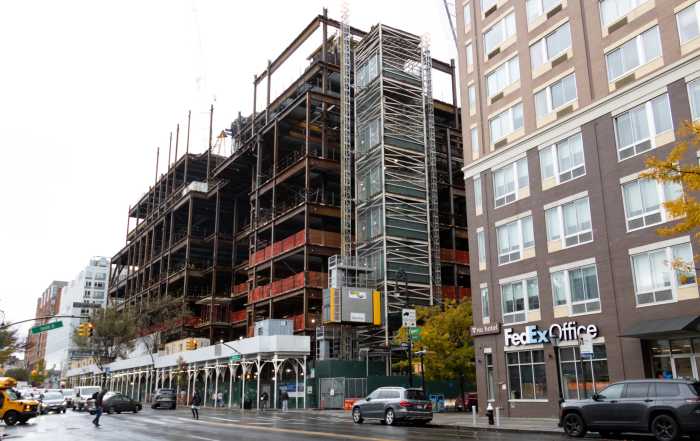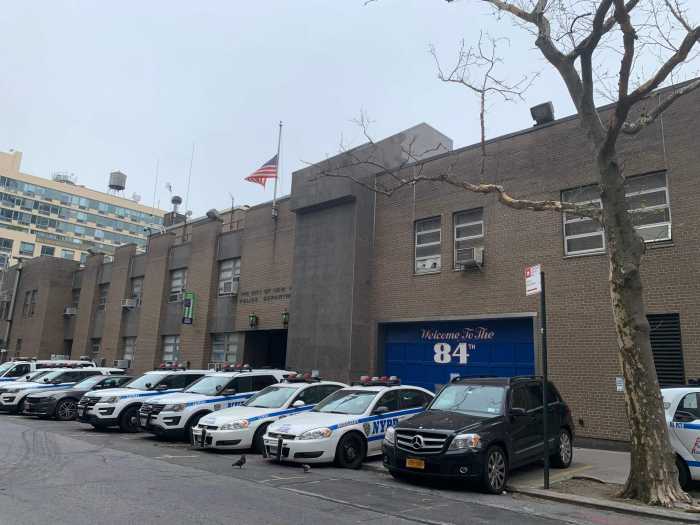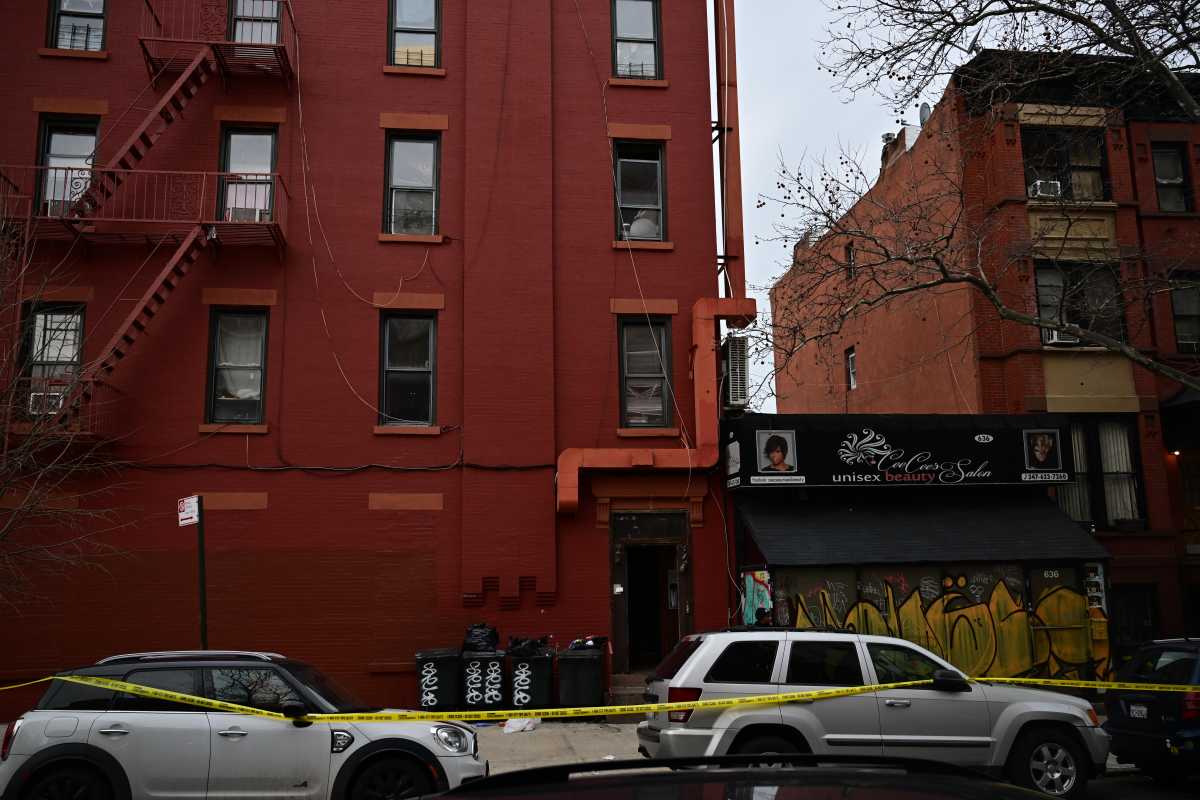Members of Community Board 2’s Land Use Committee voted in favor of Mayor Bill de Blasio’s plan to tear down Atlantic Avenue’s House of Detention to make way for a larger jail in order to close down Rikers Island.
The committee issued their recommendation at an April 16 meeting to accept the city’s proposal to close the beleaguered jail complex by 2027 and move its incarcerated people to four borough-based jails with several conditions, including lowering the city’s target population and cutting the building’s proposed size by almost half.
The group’s conditions came from a list of amendments which the influential civic group Brooklyn Heights Association distributed as a leaflet at the meeting and which a member of both the association and the committee voted to include in the recommendation.
The conditions are that the city construct a building slightly more than half the floor area ratio compared to the city’s proposal, with no more than 875 incarcerated people in it, as opposed to 1,437.
The community board also said that the city must expand their alternative sentencing programs, create a new and improved training facility for guards, and build a jail on Staten Island — the only borough exempt from the mayor’s plan.
Several representatives from the mayor’s office and the Department of Correction presented their plans for the new jail between Boerum Place and Smith Street to the committee, similarly to the community board’s packed public hearing on April 11.
Many committee members asked the bureaucrats why they didn’t readjust their proposal in light of recent legislative changes in Albany with one civic guru accusing the city of trying to strong-arm the local community into accepting larger jails in order to close Rikers.
“You’re proposing a building that — I think by-and-large you’ve heard from everyone that testified — is too big,” said Irene Janner. “You’re trying to fast-track this and you leave us in a quandary of do we vote yes and hope you shrink it, or do we insist you shrink it now because we know it is not acceptable as presented.”
State legislators passed a sweeping package of reforms on April 1, which will end cash bail and pretrial detention for almost all misdemeanor and nonviolent felony defendants, among other reforms, and which will reduce the amount of people awaiting trial in jail because they can’t afford bail.
The legislation will not come into effect until Jan. 1, 2020, but a recent study by the criminal justice reform advocacy group the Center for Court Innovation found that more than two out five people detained pretrial in the five boroughs would have been released under the new laws.
The mayor’s office launched a feasibility study to explore moving mentally ill inmates to hospitals, which could further reduce the population in the borough jails, as first reported by The City.
Brooklyn District Attorney Eric Gonzalez also announced that his office would reduce excessive incarceration under his Justice 2020 plan in March.
A senior representative for the mayor’s Office of Criminal Justice Initiatives told the committee that her team wanted to guarantee that no one would be left behind on Rikers Island if the new facilities ended up being too small, which led them to aim for 5,000 incarcerated people in accordance with the 2017 findings of the independent commission on the city’s incarceration reform led by Judge Jonathan Lippman.
“We are committed to not leaving anyone on Rikers Island. So what we don’t want to do is in trying to plan for what is not reasonable for us to achieve while we continue to push in every way shape and form that we can to make sure that everybody we can get out of detention is in community-based supervision or not in the justice system,” said Dana Kaplan.
The official said that the city could however adjust its plans during or after the ongoing Uniform Land Use Review Process, which it must pass before it can break ground, depending on the impacts of these reforms.
“We’re not fixed on 5,000. We believed that was the most prudent way to plan at the time and that is the capacity that we’re proposing,” she said. “As we are able to see what the impacts are of these legislative reforms, we can adjust that number. That number can be adjusted both during ULURP and it can be adjusted after ULURP.”
























